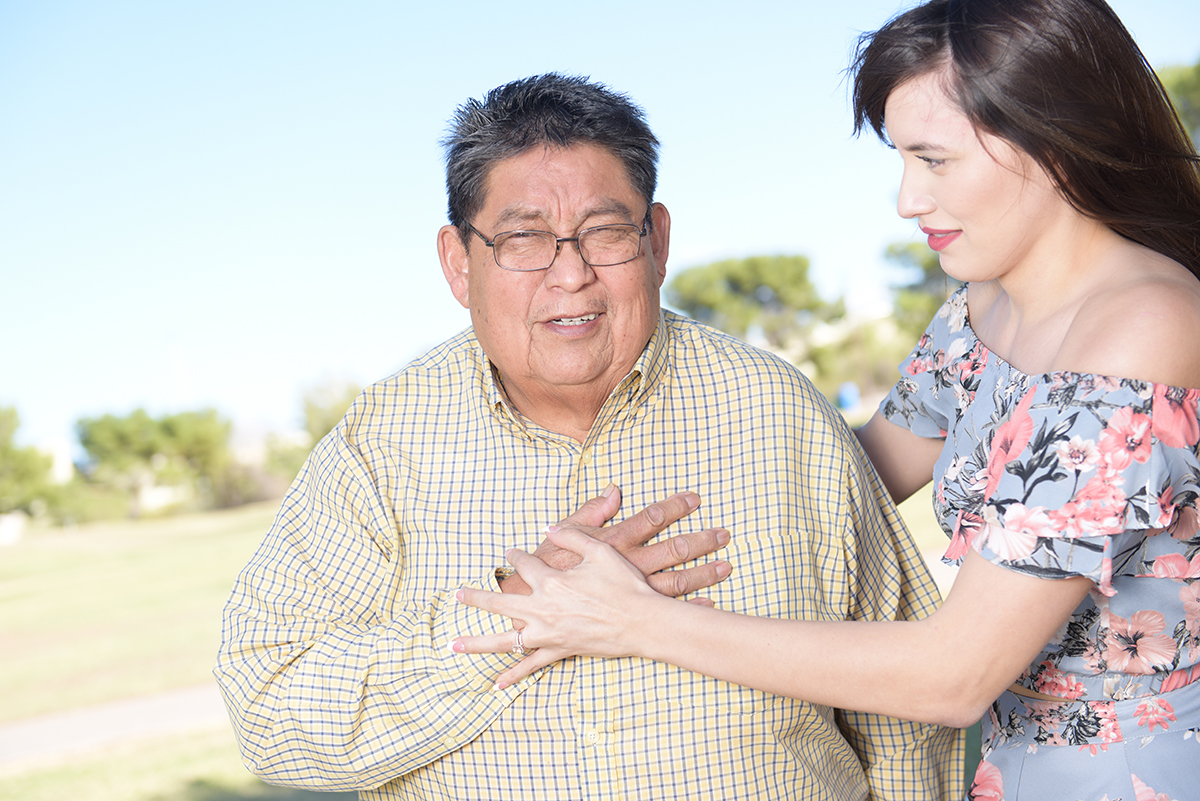Postural orthostatic tachycardia syndrome
If you get lightheaded or faint when you stand up after lying down, your autonomic nervous system may not be working properly. This system controls activities that are not under your conscious control, such as carrying out digestion, maintaining body temperature, and regulating blood pressure, heart rate and breathing.
When your autonomic nervous system isn't working right, it's known as dysautonomia. About 15 different types of dysfunction with the autonomic nervous system affect approximately 70 million people worldwide. One form of dysautonomia is called postural orthostatic tachycardia syndrome.
What is postural orthostatic tachycardia syndrome?
This neurologic condition, also known as POTS, involves too little blood returning to the heart when you move from a prone to standing position. Called orthostatic intolerance, it causes lightheadedness or fainting that you can relieve by lying down again. A rapid heart rate also occurs if you're among the three million Americans with the syndrome.
Postural orthostatic tachycardia syndrome primarily affects women between the ages of 15 and 50, but it can impact women and men of all ages.

What are the types of postural orthostatic tachycardia syndrome?
The most common forms of the syndrome are:
- Neuropathic: Following damage to autonomic nerves to the legs, blood pooling in the lower extremities can occur. Patients may experience lower blood pressure and higher heart rate when standing.
- Hyperadrenergic: The word essentially means high adrenaline. A natural stimulant in the body, adrenaline is responsible for a fight or flight response. With this form of the syndrome, you can have high levels of the stress hormone and norepinephrine, a neurotransmitter, in the blood. You may experience both increased blood pressure and heart rate when standing. Symptoms may mimic anxiety or panic attacks.
- Low blood volume: Diminished blood volume can cause symptoms similar to those with neuropathic and hyperadrenergic postural orthostatic tachycardia.
- Secondary: This occurs as a result of other conditions — including diabetes, lupus and alcoholism — and treatments such as chemotherapy. These can lead to nerve damage, affecting the redistribution of blood.
What are the signs and symptoms?
If you have this syndrome, you can experience:
- Lightheadedness or fainting
- Rapid heart rate
- Difficulty standing up
- Chronic fatigue
- Fuzzy thinking (brain fog)
- Blood pressure that's too low or too high
- Chest pain or pressure
- Migraine headache
- Fibromyalgia
- Small fiber neuropathy, a condition that affects the sensory nerves, causing numbness, tingling or burning sensations
- A sense of anxiety, tremor and cold, sweaty hands and feet
- Dark red or bluish color to the legs when standing up
Diagnosis
Although postural orthostatic tachycardia syndrome is often difficult to diagnose, your HonorHealth neurologist may determine whether you have the syndrome in these ways:
- A tilt table test that measures heart rate and blood pressure as posture and position are changed
- Autonomic testing
- Blood tests
Causes and risk factors
The causes of postural orthostatic tachycardia syndrome are largely unknown. Episodes of lightheadedness or fainting often begin after major surgery, a viral illness or trauma.
Episodes also may begin after pregnancy, and symptoms may worsen or episodes may increase right before menstruation. A significant percentage of people who develop POTS are found to have an inherited disorder of connective tissues called Ehlers-Danlos Syndrome (EDS).
POTS treatments
Your treatment goal is to increase blood flow and improve circulatory problems that may be causing the syndrome. Your neurologist may accomplish this by using one or more of the following:
- Lifestyle modifications such as increasing the amount of water your drink and salt you take in each day.
- Medical compression stockings that go above your knees to your thighs can help push blood upward from your legs, minimizing symptoms.
- A blood pressure monitor can alert you to a sudden drop or spike in your blood pressure and pulse. You should report these changes to your doctor.
- A physical training program can help improve your symptoms. Expert staff at an HonorHealth physical therapy program will give you important information about the most effective ways to treat the syndrome.
- Medications, including salt tablets, beta blockers, clonidine, guanfacine, midodrine, pyridostigmine and fludrocortisone. These raise your blood pressure, preventing lightheadedness and fainting. Your neurologist also may prescribe a beta blocker to slow the heartbeat.